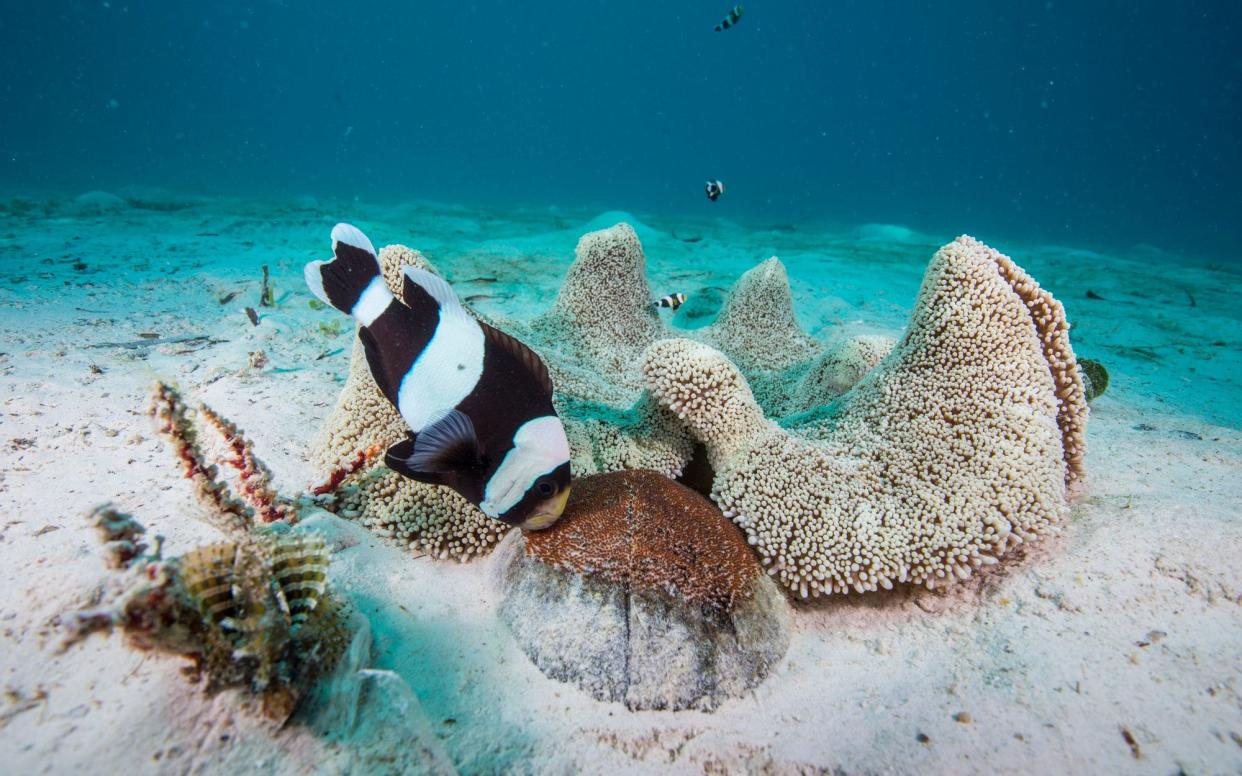Family of clownfish earns Blue Planet II comparisons to Finding Nemo

The narrative of Finding Nemo is well-worn: a male clownfish, driven to over-protective parenting by bereavement, travels across the ocean in search of his only son, Nemo. Along the way, he goes on a transformative journey that allows him to learn more about himself and his relationship with his son. There is also an excellent song about the zones of the open sea, and some vegetarian sharks.
So it was perhaps understandable that some of the millions of viewers watching the third instalment of BBC One's Blue Planet II thought about the Disney Pixar film on Sunday.
The footage, of a male clownfish working hard to prove his suitability to fertilise a female clownfish's eggs, could have acted as a perfect sequel, or even prequel, to the events of the 2003 film.
In the documentary, the clownfish must find the suitable stable surface for the female clownfish to lay her eggs. He tries to move a shell, but finds it too heavy (it is, after all, inhabited by a crab). He then spots an empty plastic bottle, but it has the opposite problem.
Finally, the clownfish are blessed with a coconut shell, which, like Papa Bear's porridge, was just right. The family then worked together to nestle it into their home: an anenome.
Nothing can stop a family that works together �� The incredible saddleback clownfish#BluePlanet2pic.twitter.com/ltsH2iQQ26
— BBC Earth (@BBCEarth) November 10, 2017
Although the clownfish were black and white in Blue Planet II, their family connection and anenome-tidying activities sparked comparisons to Finding Nemo among tweeting viewers.
Great to see Nemo has grown up and now has a family of his own
— David Hickman (@DavidHickman87) November 10, 2017
Daughter has said “This is just like a real life ‘Finding Nemo’” on more than one occasion during #BluePlanet2 �������� pic.twitter.com/uNcecIUbo2
— Pc Sally Baines (@WYP_SallyB) November 12, 2017
#BluePlanet2 just makes you realise how accurate Finding Nemo was.
— Ellie Brennan (@_EBrennan) November 12, 2017
Well son just shouted out "Dory" & "Nemo" ������������ #BluePlanet2
— Chan Dutton (@vamplacey) November 12, 2017
The Finding Nemo/Dory special of #BluePlanet2 is a childhood dream come to life ��
— TruChuૐ (@TChudasama) November 12, 2017
This coral reef episode is giving me all the Finding Nemo feels! #BluePlanet2pic.twitter.com/bfZI8i4fJF
— Dannie (@DansGall) November 12, 2017
But the episode also showed the artistic license taken by the makers of Blue Planet II: in the clownfish community, it is the males who clean up the anenome and tend to the eggs. If the eggs are well looked-after, then hundreds of them can hatch successfully.
However, in Finding Nemo, it is Nemo's mother who sacrifices her life to protect her eggs from the bigger fish that kills her. But had Pixar stuck to the facts, it would have been a very different film.

